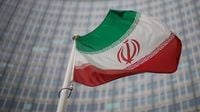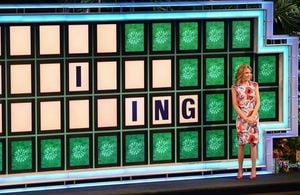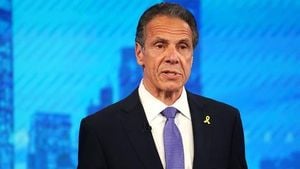On October 20, 2025, a tense and complicated standoff over Iran’s nuclear program took center stage once again, with Iranian officials, international watchdogs, and world powers all staking out their positions in the aftermath of a dramatic summer of conflict and diplomatic breakdowns. The day’s events and statements underscored not only the enduring volatility of the region but also the tangled web of alliances, suspicions, and shifting agreements that define the nuclear question in Iran.
At the heart of the latest developments was a press conference held in Tehran by Ali Larijani, Secretary of Iran’s Supreme National Security Council, alongside his Iraqi counterpart, Qassem al-Araji. According to WANA, Larijani made it clear that any proposal from the International Atomic Energy Agency (IAEA) for renewed cooperation with Iran must be submitted formally for review by a special committee within Iran’s security council. “If the IAEA seeks cooperation, it should formally submit its proposal so it can be examined by the relevant committee within the Supreme National Security Council,” Larijani stated, underlining a hardening of Iran’s diplomatic posture following months of escalating tensions.
Larijani’s remarks came on the heels of a 12-day war in June 2025, during which Israel, with support from the United States, launched a sweeping military campaign against three of Iran’s critical nuclear enrichment sites—including the heavily fortified Fordow facility. According to IAEA Director-General Rafael Grossi, most of Iran’s highly enriched uranium survived the bombardment and remains stored inside the damaged facilities at Isfahan, Fordow, and some in Natanz. “The majority of Iran’s enriched uranium remains in the nuclear facilities in Isfahan and Fordow, and some in Natanz,” Grossi told Switzerland’s Neue Zürcher Zeitung last week, as reported by The Algemeiner. He estimated that more than 400 kilograms of 60 percent enriched uranium are still entombed at these sites, although the facilities were “massively damaged” and IAEA access is now restricted without Tehran’s full cooperation.
For many observers, Grossi’s assessment contradicted earlier White House claims that the strikes had “totally obliterated” Iran’s nuclear program, setting it back by years. U.S. and Israeli intelligence had suggested the program could be delayed anywhere from one or two to several years, but the IAEA’s findings painted a more nuanced picture: the uranium is still there, but the ability to access, recover, or weaponize it is now severely hampered—at least for the time being.
Satellite imagery reviewed by the Institute for Science and International Security, and cited in a Flash Brief by the Foundation for Defense of Democracies, showed that between late September and early October 2025, there was ongoing activity at the Isfahan Tunnel Complex. Rubble was cleared from two of the three entrances damaged in the June strikes, but analysts concluded the activity appeared to be about preparing secure access and reinforcing the entrances, not a frantic effort to remove uranium or centrifuges. “Rather, it points more towards preparing controlled and secure access to two of the three tunnel entrances and hardening the entrances and utilities against future strikes,” the report stated.
Meanwhile, the diplomatic fallout from the summer’s violence continued to reverberate. After the June conflict, Iran halted all cooperation with the IAEA, accusing the agency of failing to condemn the Israeli and U.S. attacks. On October 20, Tehran confirmed it had ended the cooperation deal with the IAEA that had been signed just a month earlier, following the Western powers’ decision to reinstate UN sanctions. The Iranian Foreign Ministry declared that “all provisions [of the 2015 nuclear deal], including the restrictions on Iran’s nuclear program and the related mechanisms, are now considered terminated.”
This announcement marked a formal break with the 2015 Joint Comprehensive Plan of Action (JCPOA), effectively ending the agreement’s restrictions on Iran’s nuclear activities. Britain, Germany, and France—the so-called E3—responded by activating the “snapback” mechanism, leading to the reimposition of UN sanctions. Yet, even as they took this hardline step, the European powers signaled they were still open to renewed negotiations, hoping to find a “comprehensive, durable, and verifiable agreement.”
Iran, for its part, was having none of it. Foreign Minister Abbas Araghchi dismissed the idea of fresh talks, saying Tehran did “not see any reason to negotiate” with Western powers once sanctions had been reimposed. Supreme Leader Ayatollah Ali Khamenei, never one to mince words, openly mocked U.S. President Donald Trump’s claim that American airstrikes had destroyed Iran’s nuclear facilities. “The US president proudly says they bombed and destroyed Iran’s nuclear industry. Very well, keep dreaming!” Khamenei quipped, before going on to reject Trump’s proposal for renewed negotiations. “Trump says he is a dealmaker, but if a deal is accompanied by coercion and its outcome is predetermined, it is not a deal but rather an imposition and bullying,” he added. “What does it have to do with America whether Iran has nuclear facilities or not? These interventions are inappropriate, wrong, and coercive.”
Western powers, however, remain deeply skeptical of Iran’s intentions. As reported by The Algemeiner, they argue that there is no “credible civilian justification” for the scale of Iran’s nuclear activity, warning that it “gives Iran the capability to rapidly produce sufficient fissile material for multiple nuclear weapons.” France, the United Kingdom, and Germany have warned that if Iran does not restore IAEA inspections as required by the Nuclear Non-Proliferation Treaty, they may refer Iran’s case to the UN Security Council. Notably, since the June airstrikes, nuclear inspectors have not visited Iranian facilities, except to oversee refueling at the Russian-built Bushehr reactor.
In Tehran, Ali Larijani emphasized that the only way forward is through formal channels and official proposals. He also dismissed the impact of Rafael Grossi’s latest IAEA report, saying, “Mr. Grossi has already submitted his report; it no longer has any impact. What truly matters for the future is strengthening national unity and bolstering our defensive capabilities—two factors that can neutralize any threat.” Larijani further highlighted Iran’s growing strategic ties with Russia and China, noting that these relationships have only deepened under President Pezeshkian’s administration. “Our cooperation mainly focuses on economic issues and key regional developments,” he said, expressing gratitude for Russia’s support on the snapback issue during its presidency of the UN Security Council.
Larijani concluded that the end of UN Resolution 2231 after ten years now allows countries to pursue military and economic cooperation with Iran. While European states refuse to recognize this interpretation, both Russia and China support Iran’s view, which Tehran insists is the accurate and lawful reading of the JCPOA. “The implementation of UN Resolution 2231 has effectively ended after ten years, allowing countries to engage in military and economic cooperation with Iran,” Larijani said.
As the dust settles from the summer’s military strikes and the diplomatic chess game continues, the world is left to wonder: will the standoff spiral into renewed confrontation, or will a new framework—however fragile—emerge to contain the nuclear ambitions and suspicions that have haunted the region for decades?




